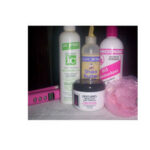What is folliculitis?
Folliculitis is the medical name for an infection of the hair follicles. They are seldom painful, but they can really itch and drive you crazy. Folliculitis can be caused by either a bacterial or a fungal infection, and it is commonly caused by spending time in a hot tub with other people. The infection can also be caused by taking a bath in a bathtub that has not been properly cleaned after someone else used it. Swimming in water teeming with bacteria may also be a cause for this uncomfortable condition. Folliculitis can present in a superficial form that usually clears up on its own, and a deep form that is usually reoccurring and usually needs medical intervention.
What are the signs and symptoms of folliculitis?
Depending on the severity of the skin infection, pimples form on the skin with the hair shaft in the center of the pimple-this is how you can tell if it is just an acne pimple or an infected hair follicle-if the pimple is superficial it may be small, contain pustules and may crust over. These superficial infections will usually clear up without medical intervention. Deep folliculitis is characterized by large pus-filled pimples, and they may be painful and leave pit like scars when they heal. Folliculitis is usually very itchy, but it can also be very tender to the touch. Sometimes folliculitis leaves you with the feeling that your hair hurts or your hair itches. Unless you have ever felt it, you probably cannot understand what I just said. I have had folliculitis, so I know what it feels like to say, “My hair itches.” It is the follicles that are irritated and feel itchy.
Some cases of superficial folliculitis are caused by the pseudomonas bacteria that live in wooden hot tubs that are not properly monitored for chlorine and pH levels. After exposure to the pseudomonas bacteria, you may start to develop itchy red bumps on your skin, within 48 hours that will later start to fill up with pus. The rash may be much worse in areas that the bathing suit covers, since the bathing suit will hold the contaminated water against your skin for a while after exposure, until you change out of your suit. If you are diabetic or have open sores or cuts on your skin, you may be more susceptible to superficial folliculitis.
There is another type of folliculitis that is caused by shaving. It is called barber’s itch. It can be caused either by Staphylococcus aureus (staph) or by a fungus. In either case it is caused when the follicles have become irritated and infected. When we use a disposable razor we should throw it away when we are done. They are called disposable for reason. I will use a disposable razor no more than twice, and then I will throw it away. I’ve had this type of folliculitis under my arms, and I don’t want it again. It is very itchy, and nothing seems to relieve it.
A fungal infection of the hair follicles in a man’s beard may develop into white itchy bumps. The surrounding skin becomes read and inflamed. The infection can spread to the lymph nodes causing hard pus-filled nodules under the skin. This infection can cause fever. There are other follicular infections of the beard, face and neck in men that are caused by different bacteria and viruses. In fact, if you accidentally shave through a cold sore, you can spread the herpes simplex virus to surrounding hair follicles.
Boils and carbuncles are a form of deep folliculitis. Boils and carbuncles are formed when the hair follicles become deeply infected with staph germs. Boils usually heal on their own within a couple of weeks, but carbuncles go much deeper and are a cluster of boils. I had a carbuncle in the center of my back that I had to have surgically removed because it had developed a ropy scar tissue that was growing toward my spinal column. It was much more serious than a simple boil.
Esoinophilic folliculitis is seen mostly in people who are HIV-positive. They develop pimples that become pus-filled sores on the face, back or upper arms. It is believed that this type of infection is caused by a yeast infection in the hair follicles.
People, who have taken antibiotics for long periods to treat acne, may develop a Gram-negative (pathogenic or harmful) infection of the hair follicles. Normally people don’t get an infection while on antibiotics, but some people will develop an infection in the chin, cheeks and jaw line.
What causes folliculitis?
We have hair follicles everywhere on our bodies except on the soles of our feet, the palms of our hands, mucous membranes and our lips. The anatomy and physiology of the hair follicle is such, that each follicle is attached to a little muscle that makes our hairs stand up on end when we are scared or cold. Right there with the hair follicles and muscles are the sebaceous glands that produce oil (sebum) that lubricates the skin and hair. Normally sebum is carried to the outside of the body through little ducts, but when the hair follicles become infected the structures within can become inflamed and the ducts can become clogged. When this happens the sebum is trapped under the skin and becomes infected.
Some of the common causes of folliculitis are friction from shaving and tight clothing, perspiration, preexisting skin problems-such as acne-surgical wounds, abrasions from surgical tape, chronic exposure to oil and grease, and any other substance that can clog the pours.
How is folliculitis treated?
Often simple cases of folliculitis clear up without any medical intervention. When the problem does not go away on its own, is when you need to see a physician. Your doctor can diagnose folliculitis by examining your skin. Your doctor may want to decide just what antibiotic to give you, and in that case he/she may want to do a scraping of the pustules to do a culture and sensitivity test. The C & S will determine which medications are most likely to kill the infection.
If your infection does not go away on its own it is important to get it treated by your physician, because a serious infection could develop. Cellulitis is a bacterial infection that can spread to the deeper structures under the skin, including the lymph nodes. Once the lymph nodes are infected the infection can easily be spread systemically. In some cases, when folliculitis is not treated, there can be permanent hair loss due to the destruction to the hair follicles.
Your doctor may order a topical or oral medication, which includes an antibiotic, as well as an antipuretic-which controls itching. Your doctor may ask you not to shave until your infection resolves; however if you feel you have to shave, to use a clean razor each time, if you use a safety or disposable razor. Some people who have this skin problem find that shaving with an electric razor is much more comfortable because it doesn’t shave as closely as a safety razor. If you use a razor, also use a shaving gel, instead of a shaving cream because it adds more moisture to the skin and the razor can glide easier over the skin. After shaving apply an aftershave with moisturizers. Some forms of deep folliculitis need to be treated with certain kinds of antibiotics, and others need topical and oral corticosteroids and antihistamines if the infection is severe.
How can folliculitis be prevented?
You may not always be able to prevent an infection, but you can take certain measures to reduce your chances of developing folliculitis by following these guidelines:
Avoid wearing tight clothing, because they have a tendency to bind or chafe your skin. When you shave, make sure you either shave with an electric razor, or if you use a safety razor, be sure to use a clean one each time. Make sure you use a shaving gel, rather than a shaving cream because the razor can glide easier.
If you have a hot tub, be sure to maintain it. Clean it regularly and follow the directions for tub maintenance when adding chlorine. If you use a commercial tub in a spa, be sure of the cleanliness of the tub. Don’t be afraid to ask how it is maintained.
To prevent skin infections use common sense. Don’t get into a dirty tub, don’t share towels with anyone, and when you launder them use hot soapy water after every use. Don’t hang them up for another use. Don’t use anyone else’s towels on your body and don’t let anyone use yours. Put them in the laundry after the initial use. You may not be able to avoid all infections, but you may be able to limit your exposure to the organisms that cause infection.
Source: Mayo Clinic information page




